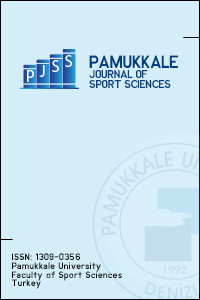EXAMINATION OF THE EFFECTS OF USING DIFFERENT TEACHING METHODS IN LEISURE EDUCATION: AN EXPERIMENTAL STUDY
EXAMINATION OF THE EFFECTS OF USING DIFFERENT TEACHING METHODS IN LEISURE EDUCATION: AN EXPERIMENTAL STUDY
Leisure education, formal education, teaching methods, play-based teaching lecture based teaching,
___
- Sivan (1997): Recent Developments In Leisure Education Research And Implementation, World Leisure & Recreation, 39 (2), 41-44.
- Başlangıç: 2010
- Yayıncı: Pamukkale Üniversitesi
Differences in Selected Long Jump Components According to the Results of Turkish Youth Boys
Durdu Mehmet SAVRUN, Hüseyin KÖSE, Ümit Can BÜYÜKAKGÜL
Utku IŞIK, Aslan KALKAVAN, Seydi KARAKUŞ
Investigation of Joint Reaction Forces and Moments During the Countermovement and Squat Jump
Ahmet ALPTEKİN, Serdar ARITAN, Erbil HARBİLİ
The effects of extracurricular sport activities on the alienation of the students
URBAN AND RURAL ADOLESCENTS’ BEHAVIORAL REGULATION IN EXERCISE ACCORDING TO BODY WEIGHT STATUS
Gökmen ÖZEN, Muhammed Emin KAFKAS, Cengiz AKALAN
A network-science approach: how different are the attacks of football?
Necmi Gürsakal, Halil Orbay Çobanoğlu, Sendi Ipeker Çağlıyor
